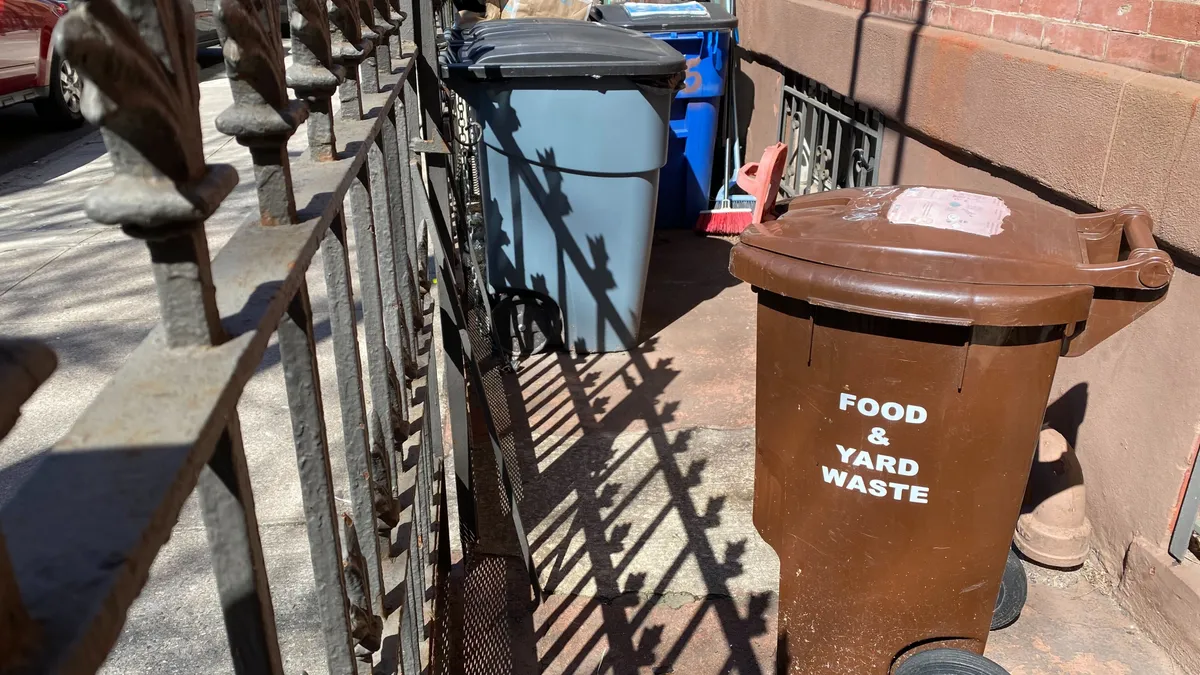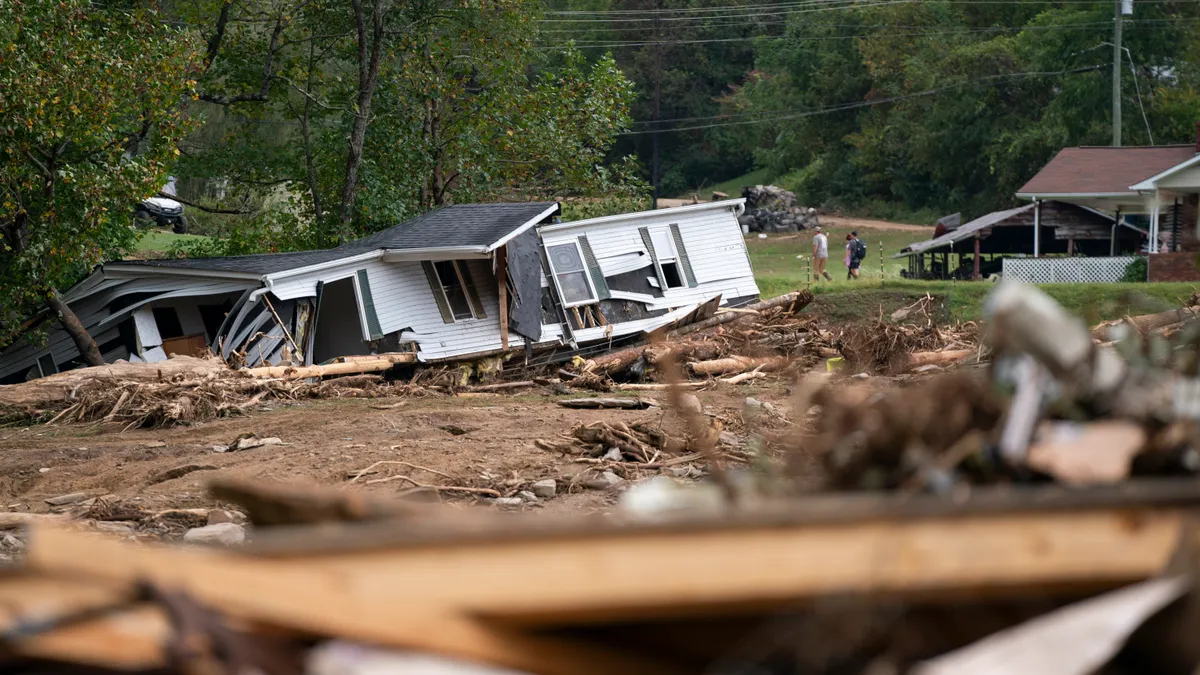Public health leaders have repeatedly stated that COVID-19, caused by the novel coronavirus, does not discriminate. The demographic data of positive cases across the U.S. tells a different story.
It has become evident that the virus has had a significant impact on people of color in American cities. Chicago’s data shows that Black people are contracting and dying from COVID-19 at rates markedly disproportionate to their representation in society. Detroit, Milwaukee and pockets of Georgia, among others, are seeing a similar trend.
"We are all in this crisis together, but we are not experiencing this crisis in the same way," Chicago Mayor Lori Lightfoot said at a recent news briefing. "The distribution of this disease tells a story about resources and inequality."
Lightfoot first addressed the disparity two weeks ago, and on Monday she laid out a suite of actions the city will take to counteract this trend. The city created a Racial Equity Rapid Response team to lead the efforts, with the city's first chief equity officer, Candace Moore, at the helm.
Data and causation
U.S. Census Bureau data shows that Chicago’s three largest population demographics are closely split among White (33%), Black (30%) and Hispanic or Latino/x (29%). But the city’s COVID-19 data shows that cases are not occurring equally among these groups.
When Chicago leaders announced the disparity, 52% of the city’s positive cases — and a striking 72% of its COVID-19 deaths — were Black individuals. As of Monday, the numbers were still disproportionately high, at 47% and 60%, respectively. By comparison, 17% of the deaths were Hispanic individuals and 16% were White.
We are all in this crisis together, but we haven’t experienced it in the same way.
— Mayor Lightfoot #StayHomeSaveLives (@chicagosmayor) April 20, 2020
Today, our Racial Equity Rapid Response Team announced rapid steps to address the disproportionate impact of the coronavirus pandemic on African-American communities. https://t.co/dz0gbXchmQ pic.twitter.com/vw7ENcl5ed
Black residents are not inherently more susceptible to the disease, but they are more likely to possess preexisting conditions that make them susceptible to illness contraction and death, experts say. They note that preexisting conditions contribute to an 8.8-year life expectancy gap between White and Black Chicagoans, meaning on average, White residents live 8.8 years longer than Black residents. That number is the baseline and does not include COVID-19 mortality.
"The biggest driver, more than half of that gap, is being driven by chronic diseases: cardiovascular disease, lung disease, smoking-related illnesses, diabetes," Dr. Allison Arwady, Chicago Department of Public Health (CDPH) Commissioner, said at the news briefing. "These underlying conditions are part of what are driving some of the racial inequities."
The other part of the equation, which contributes to people developing these preexisting conditions, is that Black people are more likely to live or work in neighborhoods that have experienced decades of disinvestment or under-investment. They have less access to quality healthcare; healthy, affordable food; reliable, widespread transit; safe, walkable streets; and parks and green spaces.
"In a moment like this, wealth allows you to respond — so if you can't work for a month or two you have resources to pull from. For people of color, especially Black people, that is not the case."

Danyelle Solomon
VP of Race and Ethnicity Policy, Center for American Progress
The higher presence of comorbidities, additional health conditions simultaneously occurring with a primary condition, puts Black people at a far higher risk of contracting COVID-19, becoming seriously ill and dying from it.
“Fundamentally, the community conditions — the holes in our social safety net, differing economic and educational opportunities and fundamentally, the systemic and institutional racism that have driven these inequities over the years — we are now seeing play out in our COVID data,” Arwady said.
Nationally, some existing living and working conditions also make it more difficult for Black people to adhere to the social distancing recommendations put in place to slow the spread of the pandemic.
"We know that minorities are 50% more likely to work in the service industry and have public-facing jobs, which increases their risk of exposure to COVID-19,” said Dr. Dora Hughes, associate research professor of health policy and management at the George Washington University Milken Institute School of Public Health. "These individuals are not able to social distance as recommended by public health authorities. … That is playing into the unfortunate situation for African American communities."
In addition to life expectancy gaps, Black U.S. citizens experience a wealth gap, Danyelle Solomon, vice president of race and ethnicity policy at the Center for American Progress, told Smart Cities Dive. For every dollar of wealth that the average Black family holds, the average White family has a ten-dollar hold, even when accounting for factors such as education and marital status. This wealth gap makes Black residents less economically resilient and able to adequately handle unexpected emergencies.
"Wealth is actually the best economic indicator overall of a person or family’s well-being," Solomon said. "In a moment like this, wealth allows you to respond — so if you can't work for a month or two you have resources to pull from. For people of color, especially Black people, that is not the case."
Racial disparities have contributed to poorer outcomes for Chicagoans in past health crises as well, said Dr. Julie Morita, who last year left her long-time position as the CDPH commissioner to become the executive vice president of the Robert Wood Johnson Foundation. In 1995, during a serious local heatwave, Black seniors over the age of 85 were more than twice as likely to die than their White counterparts. And during a national measles epidemic in 1989, more than 70% of Chicago’s cases were in African American children.
"The conditions existed for a long time ... and the conditions lead them to a poorer health baseline, so they are more susceptible," Morita said. "COVID-19 is an example of what happens when we don't have equitable systems in place."
The disparity is not solely evident in Black communities; Chicago’s leaders specifically cite Latinx as a demographic acutely affected by the novel coronavirus, saying this group appears to have significant underreporting of positive cases. And in no way is Chicago an "anomaly," Hughes said.
"It's a national crisis and Chicago is just one of many places where this reality is playing out,” she said.
Taking action in Chicago and beyond
Lightfoot pointed out a glaring problem with the COVID-19 demographics data: Not every health care provider is asking patients about their race/ethnicity and reporting it with the test data. In fact, many U.S. communities aren’t collecting or reporting this data at all.
On Friday, the U.S. Centers for Disease Control and Prevention (CDC) released its first breakdown of U.S. cases by race; it is missing this data for 65% of cases.
The lack of complete data makes it more difficult for public health officials to track the disease’s spread and carry out mitigation efforts where they are most needed. Therefore, CDPH mandated that all health care providers must submit complete demographic data for every novel coronavirus test they conduct.
But greater data collection and use comes with a word of caution.
“We want to make sure the data is used appropriately and not used to disparage these communities and make it about personal choices, when we very well know that it has nothing to do with personal choice but instead the environment in which these communities have been forced to live," Solomon said.
Within the last week, Chicago's Racial Equity Response Team has escalated efforts to help communities of color by specifically targeting three neighborhoods hit particularly hard by the virus: Austin, Auburn Gresham and South Shore. The team is building its efforts along four pillars: education, prevention, testing and treatment and supportive services.
Workers are canvassing these neighborhoods and distributing more than 80,000 door hangers and 150,000 mailed postcards with information about the novel coronavirus and how to stay safe. The targeted messaging is also going out via TV and radio, and three virtual town halls will take place this week to disseminate information and get input directly from citizens. The response team is also working directly with community groups to ensure the COVID response remains hyperlocal and on target with communities' needs. One big community group-led effort is distributing donated protective masks.
The city is also running longer and more frequent buses in these neighborhoods to lessen the pandemic's impact on people of color who often have lower rates of vehicle ownership than White residents. The new bus schedule will make it easier to practice social distancing on transit.
Public health leaders say the moves Chicago is making are a good start, but more can be done — and other cities should take note. "There are short-term solutions that need to be implemented right now. … If we don’t do that, more people will die," Morita said.
Additional short-term solutions include increasing health care accessibility, especially for the uninsured, by creating satellite coronavirus testing facilities or adding curbside testing. Increasing access to telehealth services is another option, but people of color possess the digital devices and reliable internet infrastructure necessary for telehealth at lower rates than White communities, Hughes said.
While short-term solutions are underway, cities should start considering long-term resiliency measures that can be put in place during the downtime after the pandemic subsides.
"They really need to start looking at the structural reforms that need to be made so we don't have this same problem the next time the country faces a national emergency or pandemic," Solomon said.
Chicago's mayor recognizes the need for making long-term reforms. She said at Monday's press conference that the focus on equity will not cease once the pandemic threat subsides, and that an equity response team is becoming a part of everyday city operations.
"Let me assure you that this is not just a one and done project. The team has become integrated into Chicago's emergency operations center to help coordinate communications and resources, and to create a feedback loop for information from the field to be addressed on a systematic basis," Lightfoot said.
With COVID-19 being a new illness and more information emerging daily, governments can and should add the knowledge gained to their solutions toolbox, sources say.
"We will forever be looking for new and better ways to provide healthcare to vulnerable populations. I think we're going to learn a lot from the pandemic that can be used in the future," Hughes said.
To keep up with all of our coverage on how the new coronavirus is impacting U.S. cities, visit our daily tracker.




















